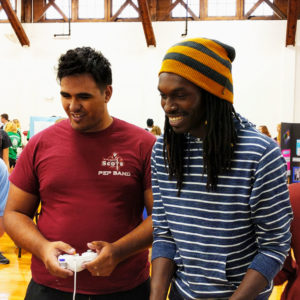I dream in pixels: “Smash is a sport.”

The crowd collided with one another as they attempted to get a better view. The match was in its final moments when it happened— a blatant fumble. Left wide open, the recurring champ swooped in for the winning point just as the announcer cried “Game!”
It was over. Xavier had won again.
The game was “Super Smash Bros.,” a dorm favorite since 1999. In it, an assemblage of Nintendo characters duke it out in a chaotic king-of-the-hill style melee. Friendships have been won and lost over “Smash,” along with rivalries spanning years and hundreds of matches. At Maryville College, “Smash” is a big deal.
But here’s an idea to consider: “Smash” is not only a beloved game, but a sport.
There are essentially two ways in which people engage with sports: actively and passively. Active engagement is easy to define, as it refers to those actually playing the sport: the quarterbacks, point guards, defenders and pitchers.
Passive engagement is less precise. Most people experience sports not through play, but through observation, whether down at the pub or in the stands. This is what I view as the main draw of sports and the inspiration for this article.
Sports are not just a game, but something to be involved in with other people. You wear your favorite teams’ jerseys, argue with friends over dream matchups and explode with excitement when your team succeeds.
They aren’t really “your team,” of course, but the fact that you neither own nor are a part of their lineup isn’t important because sports aren’t solely about the people who play them. They’re about the community.
Just because you can’t score a touchdown or a 3-pointer doesn’t make you any less of a fan because, while those things make sports exciting to watch, it’s everything around them that makes sports so beloved.
But how does this relate to “Smash?”
First, “Smash” is a game about community. From its first installment, it was built for four players and remains best when games are full. The very premise of the game promotes socializing— bringing divergent fans together so they can finally settle whether Pikachu or Mario would win in a fight. “Smash” is and always has been a game to be enjoyed with others.
And, like every great sport, “Smash” is both about who’s playing and who’s watching. Whether at campus tournaments or televised on ESPN, “Smash” becomes an event. Spectators pick sides, and drama erupts until only the victor is left standing. Even if you don’t play “Smash,” watching people play can often be just as entertaining.
Though its players use controllers, and the action takes place on a screen rather than a field, , “Smash” is, from a spectator’s standpoint, just as legitimate as any traditional sport.
There is a distinction to be made between athletes and gamers, but that distinction becomes less significant in discussing whether video games can or should be considered sports in their own right.
On that, I’d say yes, yes they can because it isn’t a collision of bodies or the rustling of grass that makes a sport—It’s all about a love of the game.

